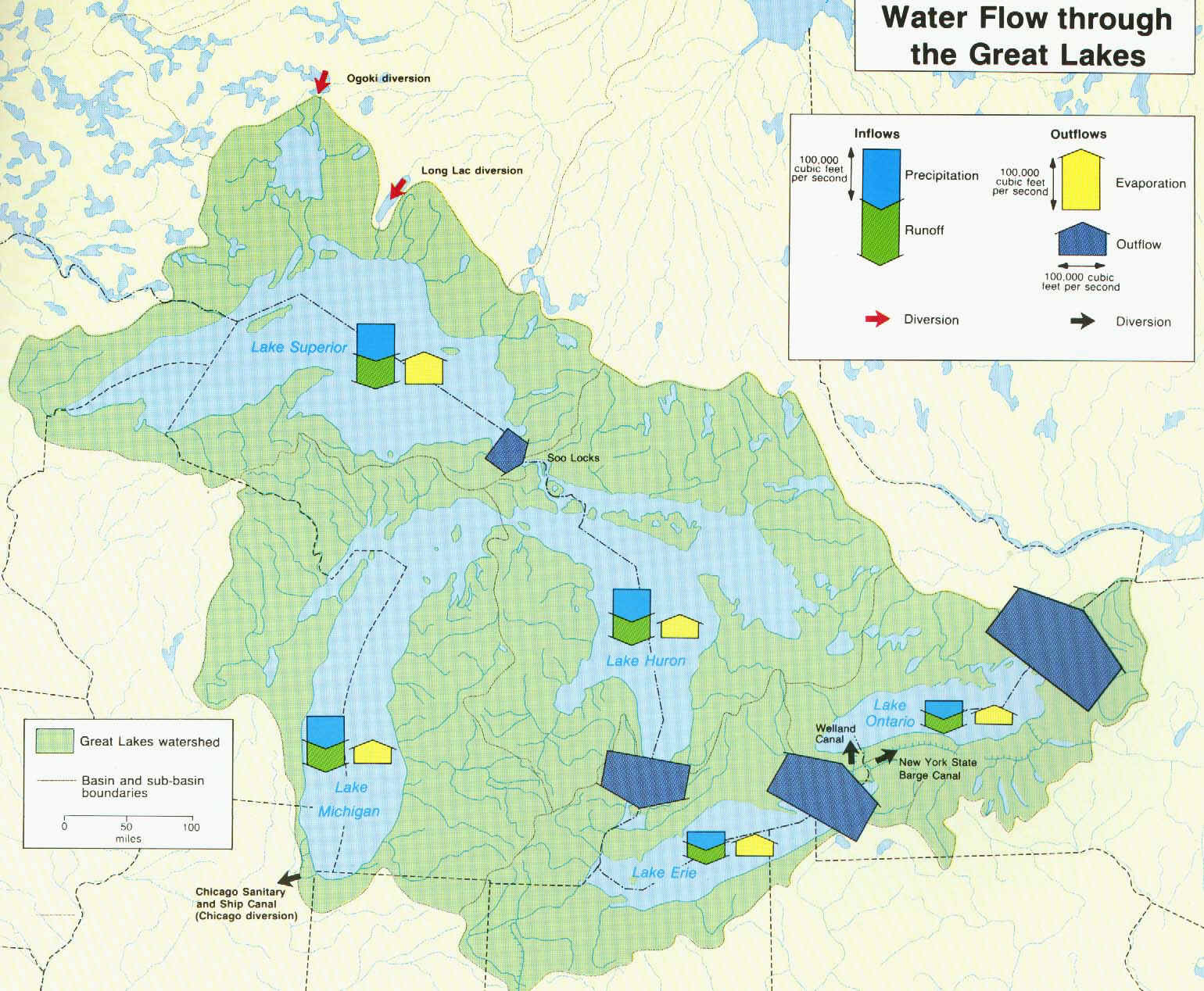Pitches for Great Lakes water have come from near and far. While future water shortages are not expected to be as great in the United States as elsewhere, certain regions, such as the Great Plains, are already experiencing problems. These days, however, the threat – by some estimates – appears closer. The Great Lakes – Erie, Michigan, Superior, Huron and Ontario – the largest reservoirs of fresh water on the planet, are not inexhaustible. Among them, they contain 20% of Earth’s and 95% of the United States’ fresh water. The five lakes contain more than 6 quadrillion gallons, enough to deluge the continental United States under 9 feet of water. But just 1% is the result of annual precipitation, so despite the apparent abundance, the lakes renew slowly.
"Taking more than that would be mining the resource," said Dick Bartz, assistant chief of the Ohio Division of Water, who advises Ohio Department of Natural Resources Director Sam Speck. Tapping into the Great Lakes is not a new idea. Cities, towns and industries in the Great Lakes region already take from the lakes an estimated 55 billion gallons of water a day, mostly for power generation, drinking and manufacturing. That amount likely will increase with population and economic development. Water now may be removed from the lakes if the user promises to return it in some safe form.
At present, water is diverted into the Great Lakes system from the Hudson Bay watershed through Long Lac and Lake Ogoki, and diverted out of the Great Lakes and into the Mississippi watershed at Chicago (see map below). These diversions are almost equally balanced and have had little long-term effect on levels of the lakes.

Lake levels are also affected by human regulation systems. Outflow is regulated at only a few places on the Great Lakes. One of the few is at the locks at Sault Ste Marie. The outflow is regulated by the International Joint commission (IJC), while two diversion structures (Ogaki River and Long Lac) divert about 500 m3/s of streamflow from the Hudson Bay basin into Lake Superior. Working under an agreement known as Plan 1977, the IJC strives to keep Lake Superior’s mean level between 182.8 and 183.4 m, while balancing water levels between Lake Superior and Lakes Michigan, Huron and Erie. However, the lake’s natural water balance overrides the effects of human regulation systems. If the natural balance remains unchanged, then the greatest effect human control of outflow could have on the level of Lake Superior is less than 8 cm in six months.
In l982, the IJC reported on a study of the effects of existing diversions into and out of the Great Lakes system and on consumptive uses. Until this study, consumptive use had not been considered significant for the Great Lakes because the volume of water in the system is so large. The study concluded that climate and weather changes affect levels of the lakes far more than existing human-made diversions. However, the report concluded that if consumptive uses of water continue to
increase at historical rates, outflows through the St. Lawrence River could be reduced by as much as 8 percent by around the year 2030.
This material has been compiled for educational use only, and may not be reproduced without permission. One copy may be printed for personal use. Please contact Randall Schaetzl (soils@msu.edu) for more information or permissions.